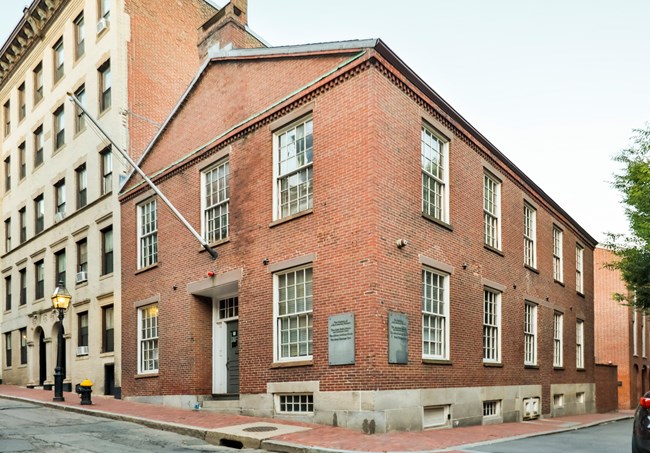
NPS Photo/Matt Teuten Opened in 1835, the Abiel Smith School served as a segregated public school for African American students in Boston. In 1787, Black Bostonians, including Prince Hall, petitioned the state legislature advocating for greater access to the public school system. In 1798, Black parents organized the African School to educate their children though some Black students did attend the public schools. The African School first met in the home of Primus Hall. It moved into the first floor room of the African Meeting House in 1808. At this date, African American children enrolled in Boston public schools moved to the African School. In 1812, the Boston School Committee officially recognized the African School and started providing partial funding at $200 annually. However, the condition of the school remained poor and the Boston School Commission received many complaints from the community about deteriorating conditions and overcrowding. A study undertaken by the Commission confirmed these critiques. In 1815, White businessman Abiel Smith died and bequeathed $4,000 for the education of African American children in Boston. The school committee used interest from this money to fund the African School and they later used a portion of it to construct the Abiel Smith School. The Abiel Smith School opened on March 3, 1835, but the conditions in this school proved inferior to those of the White schools in the city and the Black community continued to fight for equal opportunities in education.1 Throughout the 1840s and 1850s, William Cooper Nell, once a student at the African School, spearheaded the movement for equal schools. He vowed at an early age that he would do his “best to hasten the day when the color of the skin would be no barrier to equal school rights.”2 Nell and others in the Equal Schools movement led petition drives, protests, and eventually a boycott of the Smith School. Benjamin Roberts, another activist, filed suit on behalf of his daughter Sarah, against the Boston School Committee in 1849. Roberts wanted his daughter to be able to attend the school closest to their home, rather than the Smith School, and sought to challenge Boston’s segregated system. Attorneys Robert Morris and Charles Sumner argued the case but did not win the lawsuit. Despite this setback, Nell and others took their cause to the state legislature which finally outlawed public school segregation in Massachusetts in 1855. On the first day of school that year, Nell, then living at 3 Smith Court, recalled watching a young Black student walking past the Smith School. “Good bye forever colored school!,” the student said, “Tomorrow we are like the other Boston boys.”3 Following the integration of the schools in 1855, the Abiel Smith School briefly closed then later reopened for a time as an integrated primary school. It also served as a city storage facility. From 1887 to 1941 it served as a Grand Army of the Republic chapter and following that the James E. Welch Post #56 of the American Legion.4 It now houses the Museum Store and exhibition galleries of the Museum of African American History. Learn More...Smith Court Stories: a collaborative project of the Museum of African American History and Boston African American National Historic Site - a unit of the National Parks of Boston. Footnotes
Additional Works ConsultedBower, Beth Ann. "The African Meeting House, Massachusetts: Summary Report of Archaeological Excavation, 1975- 1986." Museum of African American History, Boston, MA. Jacobs, Donald M. ed. Courage and Conscience: Black and White Abolitionists in Boston. Bloomington: Indiana University Press for the Boston Anthenaeum, 1993 Kendrick, Stephen and Kendrick, Paul. Sarah’s Long Walk: The Free Blacks of Boston and How Their Struggle for Equality Changes America. Boston: Beacon Hill Press, 2004. Wesley, Dorothy Porter, and Constance Porter Uzelac, eds. William Cooper Nell, Nineteenth-Century African American Abolitionist, Historian, Integrationist: Selected Writings, 1832-1874. Baltimore: Black Classic Press, 2002. |
Last updated: January 6, 2023
